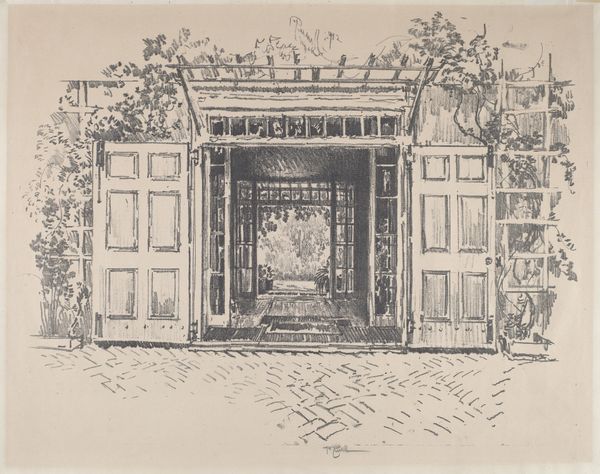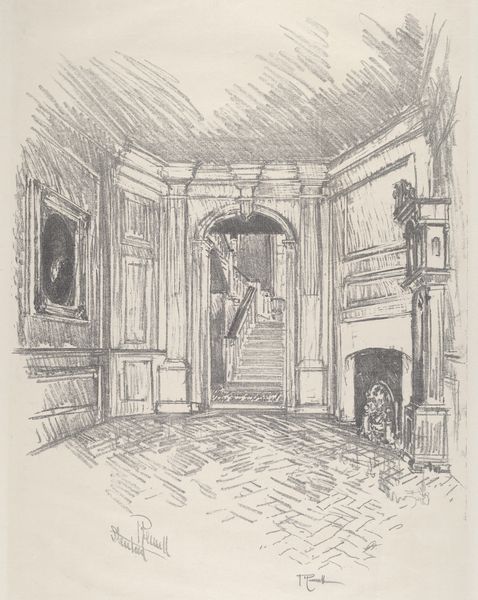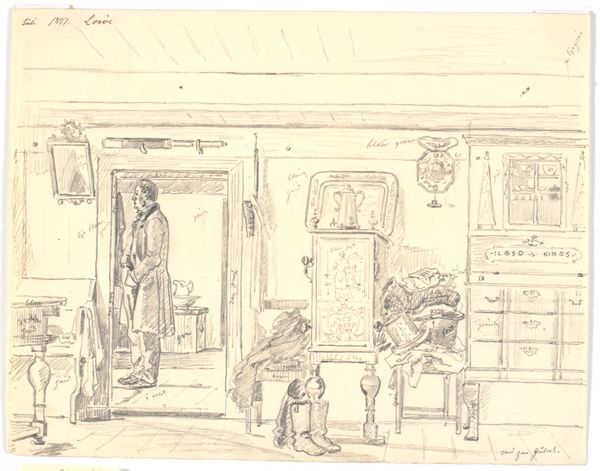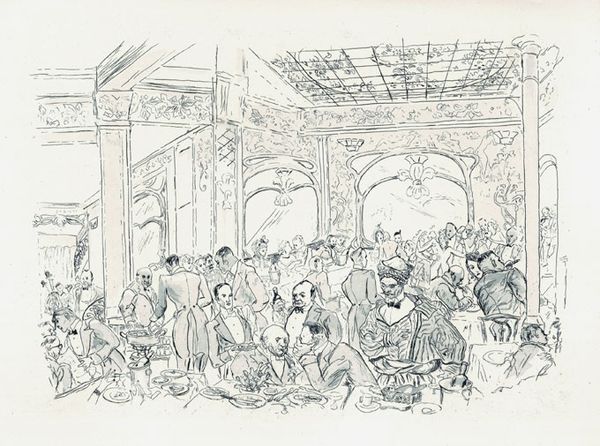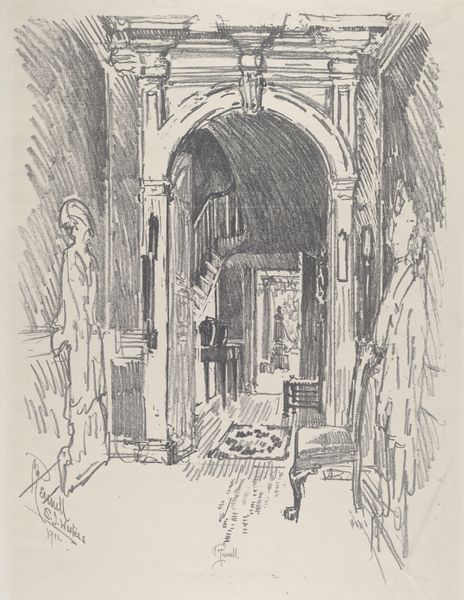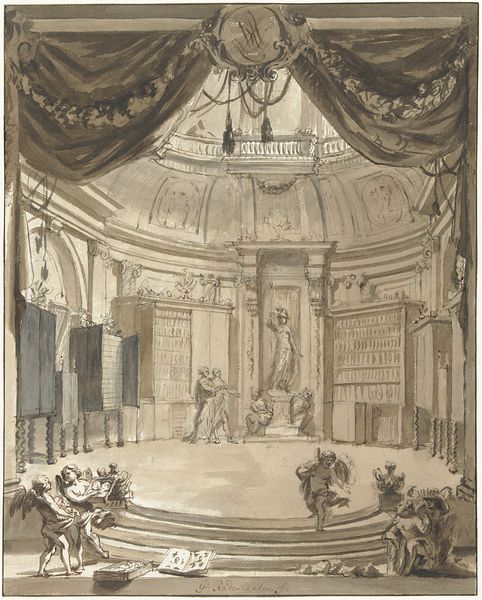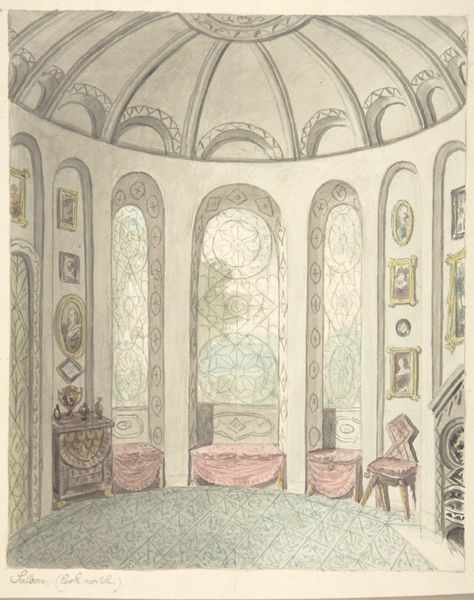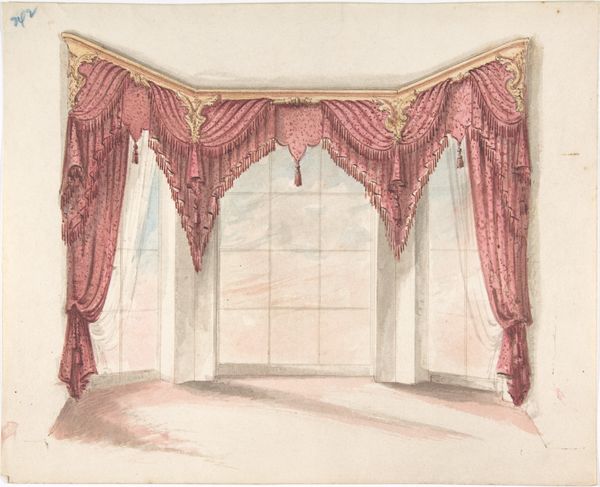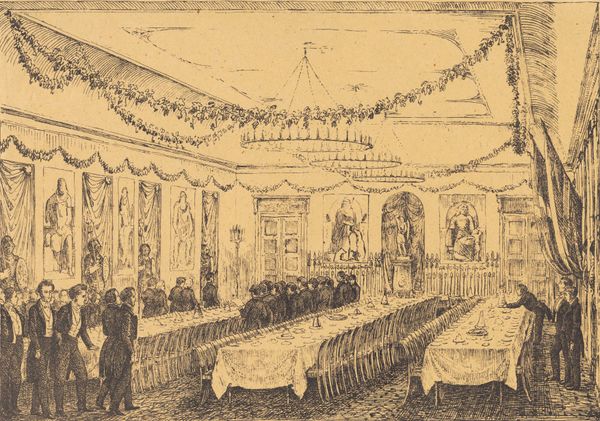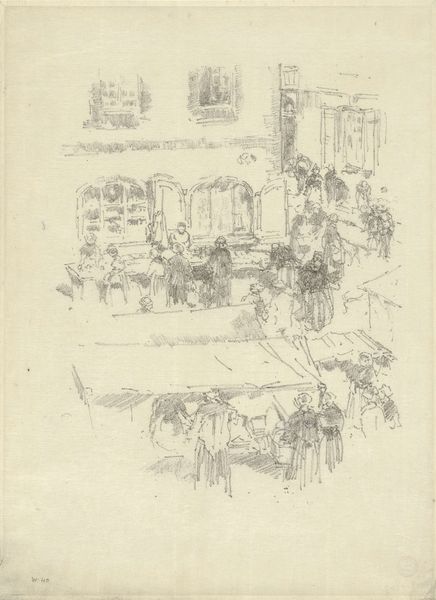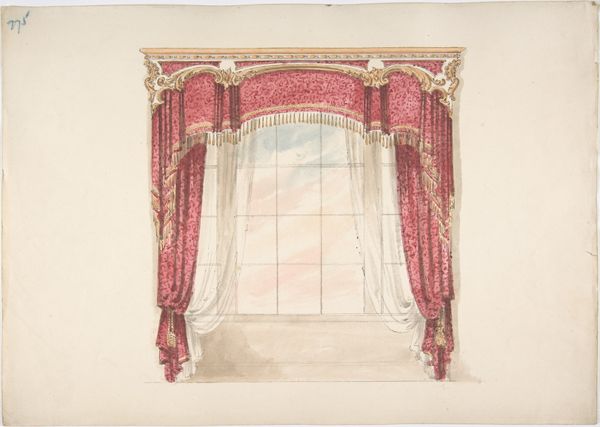
drawing, ink, pen
#
drawing
#
figuration
#
ink line art
#
ink
#
line
#
pen
#
cityscape
#
genre-painting
#
academic-art
Copyright: Tsuguharu Foujita,Fair Use
Curator: Tsuguharu Foujita's 1951 drawing, "Charpentier," is a delightful genre scene executed in ink and pen. Editor: It immediately strikes me as capturing a real sense of anticipation. The linear perspective draws you into the bustling crowd through the doorway. Curator: Absolutely. Foujita often explored social gatherings in his work, providing a window into the cultural elite of his time. Think of this as less a neutral record and more a pointed depiction of a highly stratified society. Editor: And yet, the elegance of the line work shouldn't be overlooked. The precision in rendering the architectural details, the ornate frames, and even the suggestion of fabrics. There’s a formalism here that speaks volumes. Curator: Agreed, the academic art style underscores the social codes being presented, almost as a critique of the elite's carefully constructed image. What could be the event on view to all these attendees? It certainly draws an intriguing contrast between those depicted within the artwork hung on the walls, and those assembled to admire art, in person. Editor: It certainly makes a bold choice by incorporating drawing media – ink, and pen – it manages to balance precision with a degree of fluidity and immediacy, the scene alive with energy. Note the hatching in the crowd—it suggests both a density of bodies and a vibrancy. Curator: Indeed. And how might Foujita's Japanese heritage inform his representation of Parisian society here? He positions himself as an observer, one keenly aware of the power dynamics inherent in cultural representation. Editor: Precisely. It all leads back to formal considerations: his careful arrangement of light and dark areas helps articulate a certain visual hierarchy, emphasizing specific figures in this narrative moment. Curator: This drawing compels us to consider who has access to the art world and what is seen as "worthy" of representation within such circles, revealing social and power relations. Editor: Indeed, beyond simply appreciating its technical virtuosity, examining the social forces that shaped this drawing adds to the artwork's layered complexity. It encourages multiple interpretations of Foujita's practice of linear strokes and detailed composition.
Comments
No comments
Be the first to comment and join the conversation on the ultimate creative platform.

